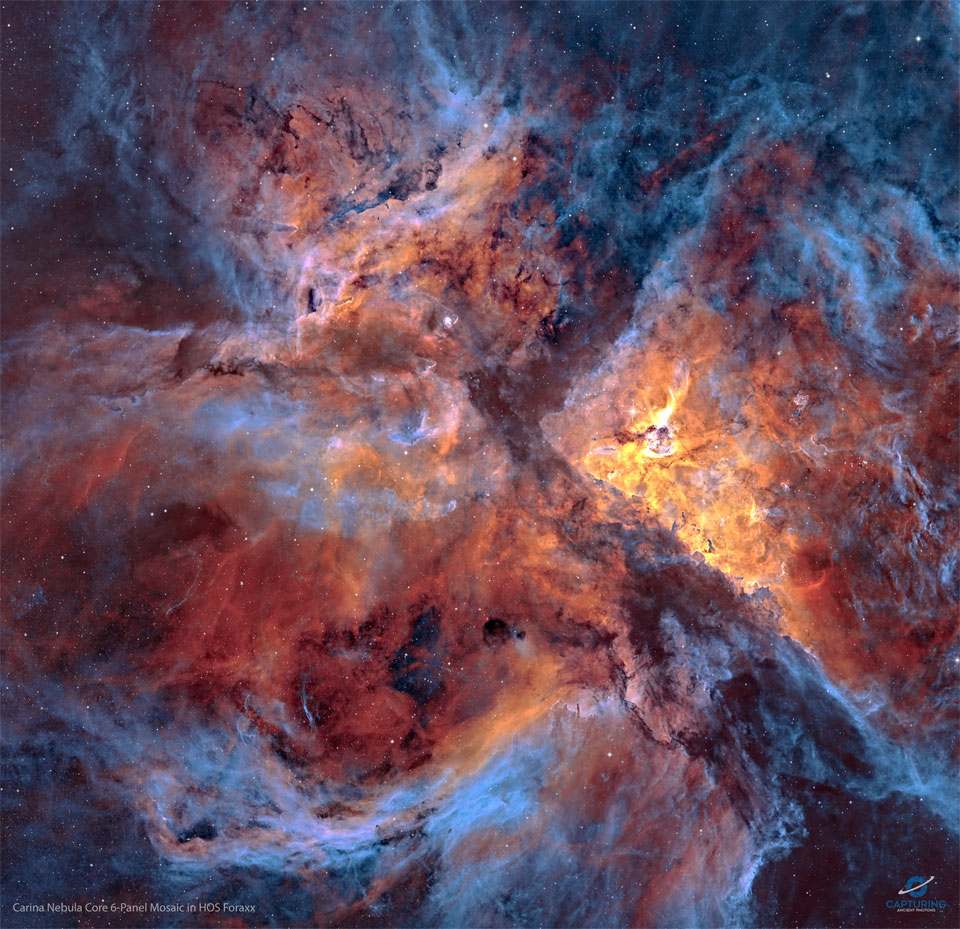johnnydeep wrote: ↑Mon Feb 05, 2024 7:41 pm
Case wrote: ↑Mon Feb 05, 2024 11:38 am
What is HOS Foraxx (bottom left corner)?
I believe HOS is Hydrogen Oxygen and Sulfur (filters?), and Foraxx is apparently a "palate" available in Pixinsight. See this for example:
More generally, all images are output as a ratio of red, green, and blue because those are the native pixel colors on our displays. "True color" images are also
collected through broad red, green, and blue filters, which approximately match our displays. So those are often called RGB images.
Science images (and also ones with a specific aesthetic) are often collected through narrowband (just a few nanometers) filters that are centered on the emission of specific elements. By far the most common filters (and largely the only ones used by amateurs) are H-alpha (singly ionized hydrogen, H II, 656 nm), [O III] (doubly ionized oxygen, 501 nm), and [ S II] (singly ionized sulfur, 672 nm). The tricky bit here is that both the H and S filters are passing deep red light, so there are different ways of deciding what colors they will be assigned to for display.
Common nomenclature is to list the filters in RGB order, so
HOO has H assigned to red, O assigned to green, O assigned to blue (which actually means O is displayed as cyan, G+B).
SHO has S assigned to red, H assigned to green, O assigned to blue. This is usually called the "Hubble palette".
HSO has H assigned to red, S assigned to green, O assigned to blue. Slightly more natural as hydrogen (red) is usually the dominant emission.
HOS has H assigned to red, O assigned to green, S assigned to blue. That's what is used with this image, and likely leads to the closest "true color" representation possible with these three filters.
Beyond this, there are different ways of balancing the weights of the RGB channels to get different visual appearances, and the Foraxx reference is to one of these techniques (but the raw data is still HOS).
And there are even more complex ways of doing things, where individual input channels are mixed across multiple output channels (as with the HOO case above). And sometimes broad and narrow filter data are combined, as well. Very often we'll see the RGB data used to create natural colored stars in an image that is otherwise narrowband (which usually produces weird star colors, like the magenta ones commonly seen in Hubble images).
 In the Core of the Carina Nebula
In the Core of the Carina Nebula




